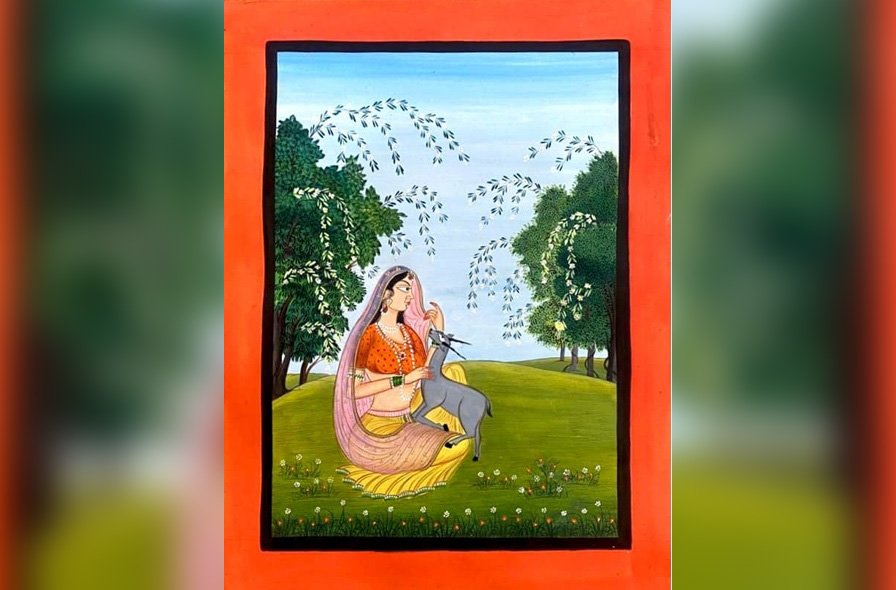
Basohli Painting, The Inspiration For Pahari Art, Gets GI Tag
JAMMU, (IANS) – World famous Basohli painting from J&K’s Kathua district has obtained the Geographical Indication tag, officials said on April 3.
GI is a form of intellectual property right that identifies goods originating from a specific geographical location and having distinct nature, quality and characteristics linked to that location.
Basohli, a simple town in the Jammu region, was the cradle of Pahari paintings. It gave birth to a unique style of miniature paintings that witnessed a fusion of mythology and traditional folk art. It was under Sangram Pal (1635-1673) and later Kirpal Pal (1678-1693) that Basohli paintings flourished. Vaishnavism was adopted under Sangram Pal and hence the early paintings, specifically the Rasmanjari series, depict Krishna as the protagonist. This was a clever synthesis of mythology and love that gave an unconventional appeal to Basohli paintings. The characteristic features of these paintings were the use of bright and bold colours like red, yellow, and blue in the borders, as well as for the generally flat background. The other distinguishing part was the facial features- a prominent nose and lotus-shaped eyes.
The female figures can be categorised into three types according to their attire. The dressing style of both males and females resemble the clothes worn in the Mughal or Rajput courts. The architectural elements also remind one of Mughal and Rajputana architecture, with its intricate inlay work, niches and lavishly furnished interiors.
Depiction of flora was not unusual in Basohli paintings. The artists’ favorite was the bright red flowers of rhododendron. The most distinctive feature of these paintings was, however, the portrayal of jewelry- embossed white paint was used for pearls and the wing-case of beetles for emerald green.
The latter phase of Basohli paintings matured under the patronage of Kirpal Singh. During his reign, additions to the Rasmanjari series were illustrated to explicitly depict the religious affiliation of the ruler to Vaishnavism. The compositions were more sophisticated in this phase, with an emphasis on naturalism. Although mention of the artists in the inscriptions was rare, two artists, Devidasa and Manaku were considered exceptionally gifted, and are supposed to have produced masterpieces.
While the later phase of Basohli paintings is thought to be more polished, the compositions of the earlier phase were equally remarkable. Of the latter period, the ‘Gita Govinda series’ by Manaku holds great importance. The Basohli style continued until the mid-18th century and spread to other towns as well. The style never completely faded out and is believed to have inspired other centres of art.




